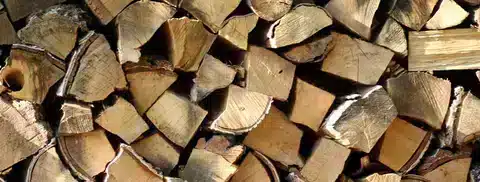Firewood is very important
Ordinary wood from Danish or Nordic softwood makes quality firewood. It burns evenly, produces little smoke, leaving a clean ash that takes up very little space. Pine can also be burnt. This burns a little faster than hardwood and produces less heat from the same volume of wood.
Wood must be dry, which means that moisture content must not exceed 20%. Wood with moisture content of 14% to 16% is the best for clean combustion and the best results from the wood. Wood can also be too dry. If wood moisture content is less than 10%, the wood will burn to quickly and will not burn optimally. Use a moisture meter if you are unsure how moist your wood is.
When buying firewood for your stove, it is important that you are aware of its quality. Poor quality firewood can mean degraded combustion, contaminated smoke from your chimney and soot on the glass pane(s) of your stove.
- Wood requires air to dry. Cover only the top of your wood pile with a tarpaulin, or store it under an outdoor roof.
- Wood dries only from April to September when stored outside.
- The wood is dry when it has a “hollow” or “crunchy” sound.
- Bring the wood indoors at least 12 hours before you are going to use it.
- Burn only good-quality wood. Never burn treated wood or driftwood.
- Do not buy wood that has been left for years or that has become damp.

How to chop your firewood
As a rule of thumb, firewood should be the same size as your forearm, or approx 6-10 cm thick and 25-30 cm long. Depending on the size of the combustion chamber in your stove, you can adjust length to fit.
If your firewood is too big, combustion will be inferior. This can produce a lot of smoke and leave smoke on the glass panes of your stove. Another indicator that your firewood is too big can be that it is difficult to keep the stove alight, glass is hard to keep clean and you have to increase combustion air flow more than usual.
